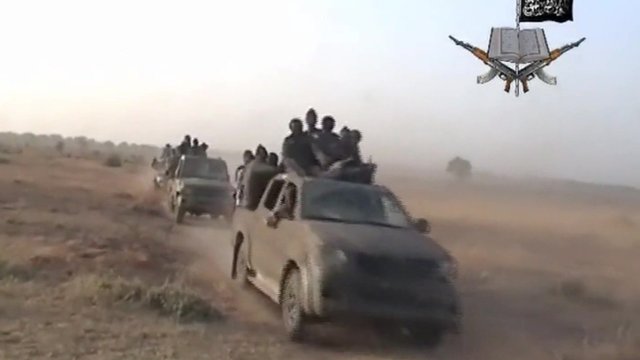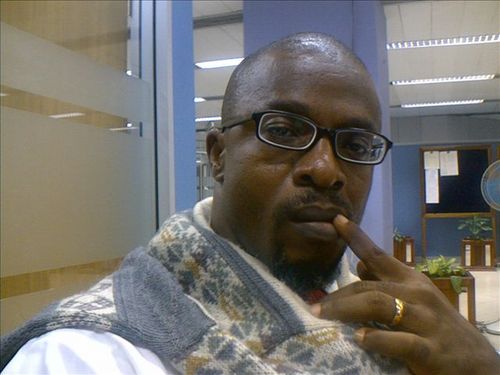
The International Crisis Group recently published a report on the Boko Haram insurgency titled ‘Curbing Violence in Nigeria (II): The Boko Haram Insurgency (full report available HERE)’. It chronicles the insurgency in a detailed and historical manner and recommends measures for addressing it, to various stakeholders.
The main findings are summarised in the opening paragraph of the Executive Summary:
“Boko Haram’s four-year-old insurgency has pitted neighbour against neighbour, cost more than 4,000 lives, displaced close to half a million, destroyed hundreds of schools and government buildings and devastated an already ravaged economy in the North East, one of Nigeria’s poorest regions. It overstretches federal security services, with no end in sight, spills over to other parts of the north and risks reaching Niger and Cameroon, weak countries poorly equipped to combat a radical Islamist armed group tapping into real governance, corruption, impunity and underdevelopment grievances shared by most people in the region. Boko Haram is both a serious challenge and manifestation of more profound threats to Nigeria’s security. Unless the federal and state governments, and the region, develop and implement comprehensive plans to tackle not only insecurity but also the injustices that drive much of the troubles, Boko Haram, or groups like it, will continue to destabilise large parts of the country. Yet, the government’s response is largely military, and political will to do more than that appears entirely lacking.”
The recommendations are addressed to the Federal Government, the northern state governments and international donor partners. They are two-fold: those aimed at protecting lives, and those aimed at tackling the root causes of the insurgency.
What I like most about the report is its detailed and granular nature. It is based on extensive fieldwork in various parts of Nigeria, with information gathered from Boko Haram members, residents in the North-East, the epicenter of the insurgency, from federal and state government officials, from security officers and many other relevant stakeholders. This is obviously a marked departure from the predominantly lazy, speculative and recycled analyses sometimes by arm chair analysts who have never been to any part of northern Nigeria.
Some of the highlights of the report, or at least, sections I found very informative include (quoted verbatim):
The group ran (probably still runs) a micro-credit scheme for its supporters:
“(They received) funds from external Salafi contacts, including Osama bin Laden, that he (Yusuf) used to fund a micro- credit scheme for his followers and give welfare, food and shelter to refugees and unemployed youth.” (P.i)
The report interrogates claims of the group’s ssociation with local politicians in Borno and the North-East (these excerpts are rather lengthy but significant):
“The 200-strong splinter group led by Abubakar Shekau and Aminu Tashen-Ilimi accused Muhammad Yusuf of being too soft and went to the then governor of neighbouring Yobe state, Bukar Abba Ibrahim, and requested rural land on which to live an ascetic life away from modern immorality. Ibrahim allowed it to settle in Dapchi, in the Bursari local government area, with a large dam for fishing” (p.9)
“Unhappy with the state government and apparently to cater to his more radical lieutenants, his (Yusuf’s) preaching took a harder line. He criticised the ruling elite, denouncing corruption, impunity, and government failures to the general admiration of the local population.” (P.10)
While already popular, Yusuf rose to much greater prominence when he reportedly formed an alliance with (former Borno state governor) Ali Modu Sheriff, a politician and wealthy businessman from a prominent Maiduguri family. Sheriff and his associates have denied any alliance with Yusuf and accused the PDP of creating Boko Haram. In 1999 Sheriff won the Borno North senatorial seat and helped Mala Kachalla, a far older politician, become governor on the ticket of the All Nigerian Peoples Party (ANPP) that controlled both Borno and Yobe state. However, an ANPP politician said, they fell out when Kachalla backed out of an agreement to give way to Sheriff after one term…
…It is widely believed in the region and by many Boko Haram members that Sheriff then cut a deal with Yusuf, whose large youth following was a significant electoral bloc. Yusuf allegedly promised to help Sheriff, provided he would implement Sharia and give the sect some senior government appointments.Sheriff denies any agreement, though many politicians and observers say Yusuf gave massive support to his campaign, reportedly including fiery attacks that portrayed Kachalla as a bad Muslim uninterested in Sharia… Sheriff also has been accused of enlisting a group, named “ECOMOG” after the Nigeria-led West African peacekeeping force in Liberia, to intimidate and silence political opponents with impunity…
…The state government allegedly provided funds to Yusuf through Buji Foi, known locally as a Yusuf disciple whom Sheriff made religious affairs commissioner when he became governor.Yusuf used the money to organise an informal micro-credit scheme that gave his disciples capital to set up businesses…
…Cracks appeared in the purported Yusuf-Sheriff alliance, however, after the latter became governor in 2003. According to Boko Haram members, he reneged on his promise to implement Sharia fully in the state, limiting its courts to social matters and refusing to allow traditional criminal punishments such as flogging for theft and fornication, amputation and stoning to death for adultery. Yusuf began to direct ser- mons against Sheriff and his government, ultimately branding him an apostate. In 2007, Buji Foi resigned as religious affairs commissioner in protest.” (P.11-12)
Questionable engagement of non-Muslim politicians with the sect’s leaders:
“In December 2008, the Borno state government charged Yusuf with terrorism before the federal high court in Abuja. He was released on bail, allegedly following the intervention of Peoples Democratic Party (PDP) members. Four influential Nige- rians, all Christians, reportedly signed the bail bond. This led to speculation that Yusuf had backing from northern Christian elites and conspiracy theories that he was being used to undermine northern Muslim leaders” (P.13)
The founder, Muhammad Yusuf’s increasing radicalisation placed him on a collision course with other Muslim clerics:
“Yusuf’s criticism of Western education brought him into disagreement with other clerics, including fellow Salafis; his former mentor, Sheikh Mahmud Jaafar Adam, was his foremost antagonist. Izala clerics, particularly Jaafar Adam and Adam Albany, devoted considerable time to criticising the group and warning the government about it.” (P.12)
Abubakar Shekau’s leadership made the sect more violent and less open to dialogue:
“Yusuf’s main lieutenants were Muhammad Lawan, Mamman Nur and Abubakar Shekau… Nur, said to be more knowledgeable, mature and level-headed, was seen as Yusuf’s deputy and eventual successor, but Shekau was chosen after Yusuf’s death because he was more radical and aggressive…With Shekau at the helm of its most significant faction Boko Haram has grown more ruthless, violent and destructive and less open to dialogue.” (P.19)
The sect is not a cohesive unit. It is highly fragmented into about 6 main factions. Some members are disenchanted by the frequent bloodletting and are pro-dialogue, yet such views are mercilessly crushed:
“Security officials say their successes are due to leaks from disenchanted members. Some are fed up with the bloodletting, want to settle down, but fear advocating negotiations could mean execution by decapitation. Shekau has repeatedly ruled out talks with the government, despite claims by some purported sect members that these were ongoing. Members who proposed dialogue were killed on Shekau’s orders, silencing other pro-dialogue individuals” (p.20-21)
“The killing and capture of top commanders significantly impacted the sect’s eleven- member Shura, leading to its expansion to 37. This made it difficult to reach unani- mous decisions, with consequent adverse consequences for operations. In the past four years it has split into many factions with varying aims, to the point that some believe it is too fragmented to present a common front for dialogue.” (P.21-22)
Boko Haram has ties with extremist Salafi groups around the world:
“Osama bin Laden’s interest in Nigeria dated from his 1992-1996 stay in Sudan, where he reportedly met Mohammed Ali, a Nigerian from Maiduguri studying at the Islamic University in Khartoum who became his disciple and trained in Afghanistan; according to Boko Haram sources, Bin Laden asked him to organise a cell in Nigeria with a 300 million naira budget (approximately $3 million in 2000). Ali returned home in 2002 and began funding religious activities of Salafi groups that were unaware of the plan. Mohammed Yusuf and his group allegedly were the major beneficiaries. With the 2003-2004 Kanamma uprising, in which Mohammed Ali was a major player, Izala groups distanced themselves from him as too radical.” (P.23)
There is a lot more in the report.
I find three main weaknesses in the recommendations section:
First, there is little to no emphasis on how to address the politicization of the insurgency, particularly the alleged involvement of non-Muslims in an ostensibly Islamist phenomenon. For instance, the well-documented involvement of non-Muslims in botched bomb attacks of churches, the arrest of Boko Haram’s medical doctor, Dr. Isaac Ikere, a World Health Organisation (WHO) consultant and that Yusuf was bailed by prominent non-Muslim politicians (although this was explored briefly in the main body of the report in pg. 13) and numerous similar incidents are all highly significant.
Second, the report did not recognise that the media (collectively) are important stakeholders in insecurity and violence in Nigeria. The mainstream media play a huge role in moulding public opinion in Nigeria. Media ownership reflects some of Nigeria’s regional and religious cleavages and the way incidents are reported with a certain slant contribute to the tensions in Nigeria.
Third, I would argue that any recommendation must include a counsel to the Federal Government to revamp its PR on this insurgency. The army’s poor communication strategy has significantly eroded the already thin public trust in the military and in other security agencies. They frequently under-report casualty figures and their human rights violation record in the North-East is legendary. They willingly misinform the public with exaggerated claims of victory.
Last year the Joint Military Task Force (JTF) claimed they had killed Abubakar Shekau which turned out to be patently false. Then they callously claimed that the reports of the 20 school girls abducted in Konduga in Borno in February were false. Most recently, the JTF claimed to have rescued the 200 female students abducted in Chibok, Borno a few days ago, a claim that was widely disputed by the school principal. These tall tales are insensitive, are a contemptibly futile attempt at winning hearts and minds and have done incalculable damage to the security agencies’ reputation. The army needs to urgently review it’s public engagement strategy to regain the trust of Nigerians.
Notwithstanding these shortcomings, the Crisis Group report is meticulously written, easy to read and devoid of unnecessary jargon. It is a must-read for anyone interested in understanding the Boko Haram insurgency.


